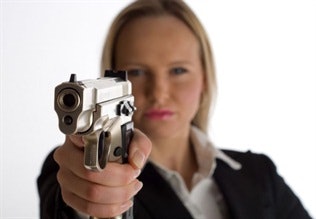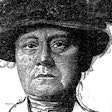 Photo: Johan.V.
Photo: Johan.V.
Men seem to have it so easy when it comes to concealed carry weapons. They tend to have bigger frames, longer torsos—more "bulk to hide the bulge." We women, especially of the small-frame variety, don't have it so easy.
Where we want to carry the firearm; whether it's on our person or in a purse; what weapon we choose to carry; what type of holster we choose must be considered. The most important factors to consider are safety, ease of access, and whether what we're carrying is going to get the job done.
Everyone has her personal preference when it comes to firearms. Me? I'm a semi-auto woman, .40-cal. I know that I can shoot accurately with this type of weapon. I'm familiar with it. I can field-strip it blindfolded. The type of holster I have is made for my weapon of choice to carry, and I know how to wear it on my person and carry it safely holstered in my purse.
This is my personal set-up: Glock G27 and right-handed Blackhawk SERPA holster. My weapon is an extension of me and my holster melds almost seamlessly with my body.
When you choose your own personal set-up, here are a few questions to consider:
Am I able to safely and accurately handle my weapon of choice?
Ask yourself if you feel comfortable handling and firing your weapon. Are you familiar with its mechanisms? Can you field strip it if necessary? Can you safely and properly handle a jam or misfire? Do you religiously practice with your firearm, both dry fire and live fire?
Does the make and model fit the purpose for which I want it?
This is fairly self-explanatory. Obviously you wouldn't want to choose a .357 revolver with a 5.5-inch barrel for concealed carry.
Is there a CC holster for my weapon of choice that will fit my body?
Make sure you get a holster that fits both your weapon and you. Determine where on your body you want to carry, then try on different rigs—thigh, ankle, or paddle. The clothes you wear determine which set-up you use. (If I wore a dress, I'd opt for a thigh strap instead of carrying my gun in my purse.)
Am I able to safely and swiftly retrieve my weapon if the situation arises?
Practice with your weapon and the type of holster you'll use; wear the type of clothes you would have on in any given circumstance. Check off these three items, when choosing a holster:
- Always make sure you know how to properly use the weapon you choose to carry.
- Make sure that the size of the weapon isn't too big for you to properly carry concealed.
- Always try on your holster.
Just pretend you're trying on jeans in a department store. It can take awhile, but it's imperative that you have a proper fit.
If you choose to carry, use common sense. If you carry your weapon in your purse, make sure it's properly secured in a holster or in the compartment meant for your gun (in a concealed-carry purse). Make sure the safety is on, and never leave your purse unattended. Don't leave it on the restaurant table; don't ask your friend to watch it while you talk to an old friend a few tables away; and don't leave it in the restroom. It only takes a moment of inattentiveness on your part in order for someone to get hold of your deadly weapon.
Take the time to find your ideal CCW set-up. It will keep you and the public you serve much safer.
Higgins P. QTip is the pen name of an aspiring police officer who is completing her training. She is also and an avid shooter.


















